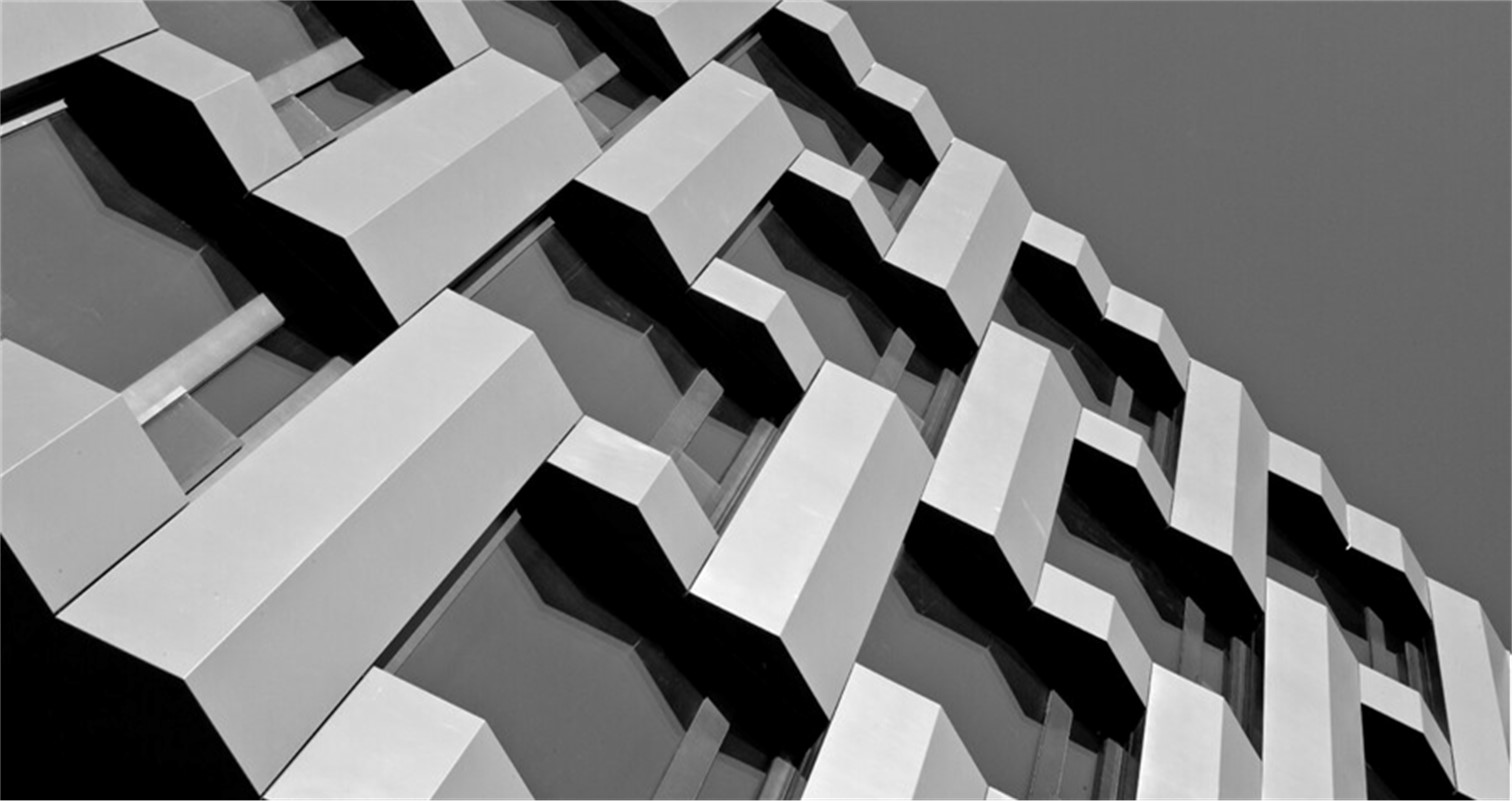
Aluminum Composite: Transforming Construction with Versatility and Style
In the construction industry, the constant search for materials that combine performance, aesthetics, and functionality has led to the popularization of ventilated façade systems. In them, aluminum composite is a material that has revolutionized the way we design and construct buildings and structures due to its characteristics and properties.
Ventilated façades are construction systems used in contemporary architecture that consist of an outer layer of cladding separated from the main structure of the building by an air chamber. These facades allow air circulation between the outer layer and the wall of the building, which provides several benefits in terms of thermal insulation, humidity control, and energy efficiency.
The Aluminum Composite has revolutionized how we design and construct buildings and structures due to its characteristics and properties.
With its various applications and a wide range of advantages, ALUMAT® is the composite aluminum that Mathiesen Construction has developed, becoming a key element in the palette of options for architects, engineers, and builders.
What is Aluminum Composite?
Aluminum Composite Material, also known as ACM, is a material composed of two outer layers of aluminum bonded to a core of lighter material, usually polyethylene or fire-retardant mineral material. This combination of materials gives the ACM a unique combination of characteristics that make it highly desirable in the construction industry.
Internal Structure of Alumat® Composite Aluminum

Ventilated Facades and Aluminum Composite Panels
Role of the ACM in Ventilated Facades:
- Insulation and Protection: ACM is used as the exterior cladding on a ventilated façade. Its aluminum outer layer offers a protective barrier against the elements, such as rain, wind, and intense sunlight. Simultaneously, the lightweight material core in the ACM reduces heat transfer from the outside to the inside of the building.
- Air Chamber: In a ventilated façade, an air chamber is created between the exterior cladding of ACM and the structure of the building. This air chamber allows air to circulate, creating a natural ventilation effect. Air flows from the bottom to the top of the façade, contributing to dissipating accumulated heat and humidity control.
- Energy Efficiency: Air circulation in a ventilated façade improves the energy efficiency of the building. During the hot months, the air chamber allows heat build-up to escape, reducing the thermal load inside. In winter, cold air circulation can help cool the structure and contribute to energy savings.
- Humidity Control: Ventilated facades control humidity by allowing air to circulate behind the cladding; this is especially beneficial for preventing moisture build-up on the building’s walls, which could lead to deterioration and mold issues.
- Aesthetics and Design: The ACM offers many colors, finishes, and textures to create attractive and stylish facades. ACM panels can be installed uniformly and cleanly, contributing to modern architectural design.
- Reduced Maintenance: ACM’s coating is low-maintenance due to its corrosion resistance and smooth surface. In addition, the ventilated façade system protects the structure of the building, which can extend the life of materials.

Other applications for aluminum composite panels (ACM)
A typical application of aluminum composite is in the creation of architectural facades. They are used to clad the facades of buildings, providing a modern and stylized appearance. Versatility in colors, textures, and shapes allows designers to create visually striking structures. But these panels can also be used in other applications such as:
- Signage and Advertising: Widely used in the signage and advertising industry. The smooth, uniform surface of the ACM is ideal for printing high-quality graphics and logos, making it a popular choice for promotional signs and panels.
- Indoors: They are used to coat walls, ceilings, and columns. It offers a durable, low-maintenance solution for commercial and residential spaces.
- Divisions and Partitions: ACM panels are used to create divisions and partitions in interior spaces, offering privacy and design in a single product.
- Urban Furniture: These panels can also be used to create urban furniture such as kiosks, benches, and information panels, adding a modern and resistant touch to urban environments.

Aluminum Composite Benefits:
- Lightweight: Despite its solid appearance, aluminum composite is surprisingly light, making it easy to handle, transport, and install.
- Durability: Aluminum is resistant to corrosion and weathering, ensuring a long service life for the panels.
- Versatile Design: ACM panels are available in many colors, finishes, and textures, allowing designers to create unique and attractive styles.
- Low Maintenance: Aluminum composite requires little maintenance. Its smooth, non-porous surface is easy to clean and won’t fade over time.
- Thermal and Acoustic Insulation: Depending on the core used, aluminum composite can have thermal and acoustic insulation properties, contributing to the energy efficiency of buildings.
- Sustainability: Aluminum is a recyclable material, making it a more sustainable option than other cladding materials.

Alumat® Aluminum Composite Panels used in the façade of an automotive dealership.
Different Types of Coatings and Their Applications
- PVDF Coated Panels: PVDF (fluorinated polyvinylidene) coated aluminum composite panels offer exceptional durability and fade resistance. These panels are ideal for exterior applications such as facades, as they maintain their original appearance over time and resist the elements.
- PE Coated Panels: PE (polyethylene) coated panels are a more economical option and suitable for interior applications or environments with less exposure to the elements. They are ideal for indoor partitions and ceiling cladding.
- Specialty Coated Panels: Some manufacturers offer aluminum composite panels with specialized coatings that mimic the texture and appearance of other materials like wood or stone. These panels are ideal for achieving a specific aesthetic without compromising the material’s durability.
- Anodized Finish Panels: Anodized finish panels have a metallic look and can be used in interior and exterior applications. This finish provides a modern and elegant appearance.
Aluminum Composite panels in ventilated facades improve energy efficiency by protecting against the elements and thermally insulating.
Aluminum composite has changed the way we see and experience built spaces. Its capacity to combine functionality, aesthetics, and sustainability makes it an indispensable material in the modern construction industry’s palette of options. From iconic facades to eye-catching signage, aluminium composite continues to leave its mark in the design and architectural world, adapting to a wide range of applications thanks to its different types of cladding and finishes.
Mathiesen has developed its ALUMAT® brand by developing different lines for various applications, from basic to specialized products with functional characteristics.
Some projects:
If you have any further questions or require a quote, contact us.















